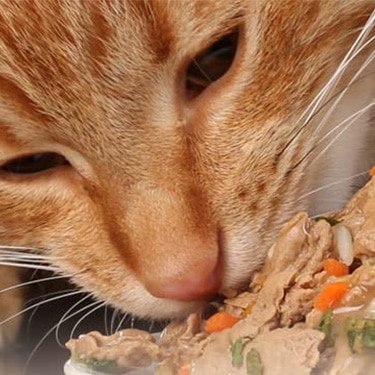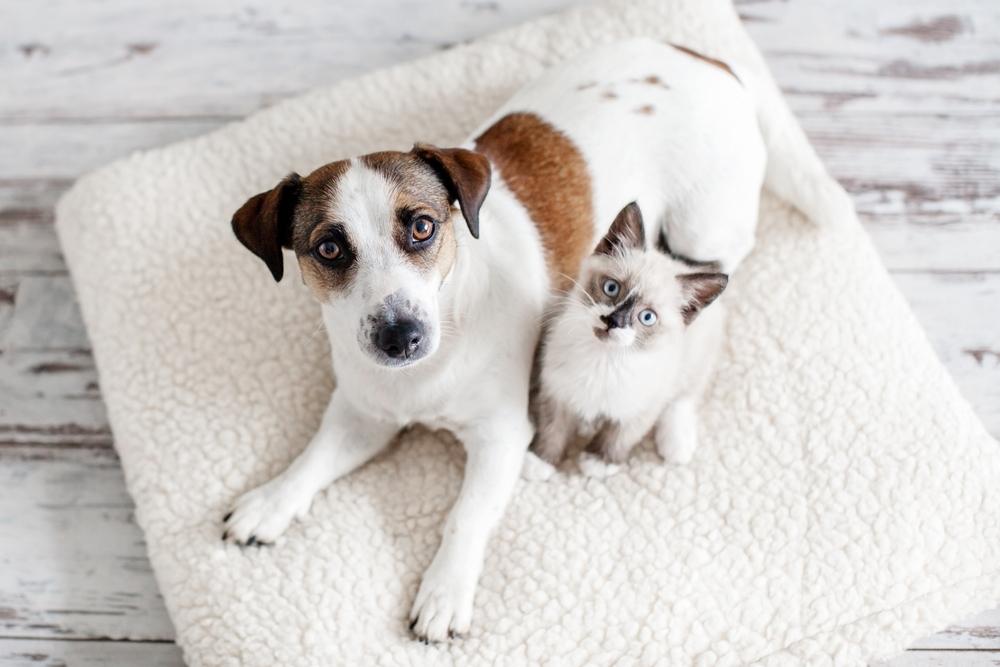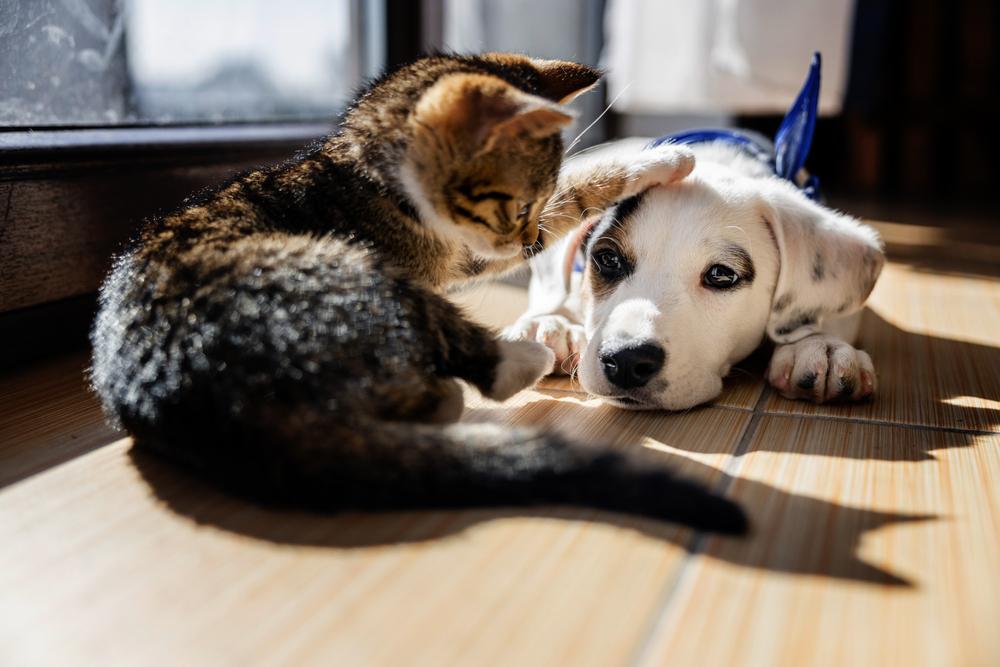

Training is an important part of creating an amazing bond with your pet. Learning approved and unapproved behaviors helps keep them safe, promotes a harmonious home environment and deepens your connection. All puppies and kittens learn differently, and your approach to training should match the species as well as potential breed tendencies and other factors that influence your pet's needs.
Learned behavior starts very early for puppies and kittens, beginning with the behaviors they learn by watching their mothers (known as "copycat" behavior). This socialization is just one factor that can impact how they respond to training. By adjusting timing and technique to fit your individual pet, formal training can help your puppy or kitten learn your house rules and adapt to a range of situations with confidence.
Behavior in Puppies vs. Kittens
First, it's important to understand the difference between puppies and kittens. Dogs evolved as predators. Cats are both predator and prey (at risk of being eaten). This changes how they interact with their world.
Natural Instincts
Your pet inherits certain behaviors based on natural breed tendencies. For example, border collie puppies chase instinctively, predicting how they herd sheep as adults, while golden retriever pups love to retrieve. Recognizing predatory behaviors like chasing, biting or fetching can help you select ideal rewards for obedience training.
Kittens also enjoy chasing and pawing objects to test for safety or fun. Many cats also instinctively hide from anything unfamiliar or scary, an essentially protective behavior. Another instinctive behavior — burying waste — makes kittens easy to litter box train.
Social Behaviors
Dogs evolved as social creatures and had to get along because they lived in groups. Most dogs, therefore, strive to please you and use appeasement signals (like showing their belly) to demonstrate submission. Humans and dogs share some social similarities, so humans sometimes find it easier to understand and communicate with dogs.
Cats also enjoy social interaction and often live happily in groups. Think of feral cat colonies that function similarly to lions. However, your kitten's predatory behavior relies on solitary hunting without depending on the social group. While one might say dogs want to please us, cats more typically please themselves, lending to the affectionately infamous "what's in it for me" feline attitude. However, as with all things, there are exceptions among both dogs and cats.
Learning Ability
Young pets learn cause and effect quickly, and kittens and puppies are equally intelligent in their own ways. Learning ability varies between individual cats and dogs. The easygoing, eager-to-please individuals may learn more quickly, but often the smartest pets are harder to train. Higher intelligence can make pets think they know better and question you. Showing pets that learning means fun can help overcome these obstacles.
Socializing pups impacts learning ability. The prime socialization period falls between three and 14 weeks (and can go longer), during which they learn about people, their environment and what's safe or unsafe. Since many puppies get adopted during this window, proper socialization helps shape the pup's personality and eagerness to learn new things.
Prime kitten socialization falls between two and seven weeks. Although socialization generally continues up through 16 weeks, most kittens come to new homes after the prime period has closed. This can make it harder for kittens to unlearn problem behaviors, like fear of dogs or strange people or difficulty accepting new situations.
When to Start Training Puppies and Kittens
Pets learn whether you formally train them or not. For example, your puppy steals your sock (cause) and you laugh and chase (effect). In this case, the pup gets rewarded with a fun game, and you've trained them to repeat the behavior. In the same way, the sound of kibble hitting your kitten's food bowl (cause) brings them running to eat (reward) — and yes, they've learned to "come when called" by the sound of dinner. Begin training as soon as your kitten or puppy arrives to take advantage of these opportunities.
A pet adopted from a shelter may need time to adjust before showing their true personality. In this case, it's okay to wait on formal training. Simply set up the litter box and scratching post, or the puppy pee pads and chew toy, and offer praise when your kitten or puppy uses them. Use this time to let your pet tell you what type of reward they love: praise, treats, toys, games or a combination of these.
Are Kittens or Puppies Easier to Train?
The answer to whether puppies or kittens are easier to train depends on what behaviors you want to train for and the individual personality of the animal. But once pets learn you reward them for learning, you're well on your way. Here are some things to keep in mind:
Motivation
Most puppies respond to treats and praise. Kittens are generally less food-motivated and can respond well to play instead; for instance, learning to "wave" on command with a paw by pawing at a feather toy. Even food-motivated kittens won't have the tummy capacity for too many treats.
Responsiveness
Puppies typically respond well to a firm, low-pitched voice paired with the reward. Kittens tend to prefer high-pitched voices but also respond quickly to motion. A target stick can work extremely well when training cats to direct their attention or paw to the location you've requested.
Attention and Engagement
Both kittens and puppies have short attention spans, which means they can become distracted and lose focus quickly. Train your pet in an environment that fosters focus and makes it easy for them to behave in the way you want. Beware of distractions — noisy lawn mowing can make it hard for your new pet to concentrate — and work in small training sessions throughout the day instead of one long session. It's best to end training before their engagement wears out to leave them wanting more.
The easiest way to train is to catch puppies and kittens in the act of doing something you like, name it and reward the behavior. Training should feel like a game, not a dreary exercise. Approach training as a way to build your bond and help your pet engage with their environment safely and confidently.
Create an Environment of Lifelong Learning
Remember, puppies and kittens learn all the time, whether you implement a formal training program or not.
Each has unique ways of learning, and teaching your pet goes beyond basic manners, commands and fun tricks. Interacting with your new puppy or kitten through training strengthens your family ties. It also provides mental stimulation and environmental enrichment that helps keep pets happier and healthier, setting them up for a wonderful life with you.





















